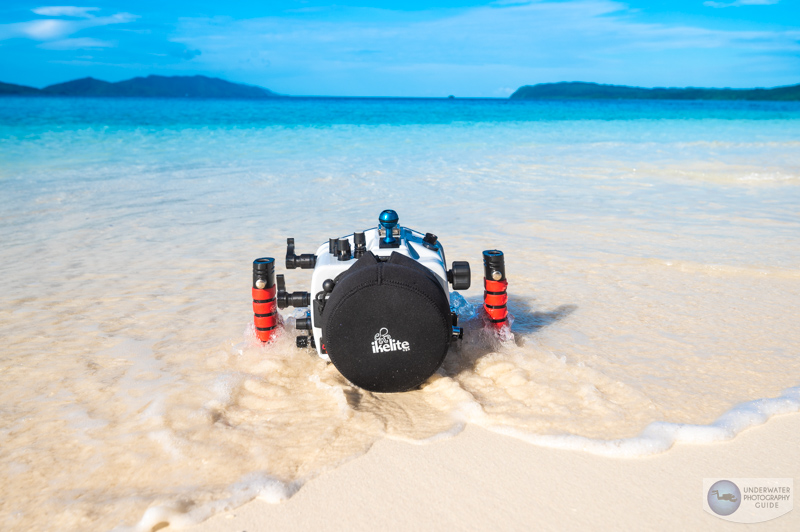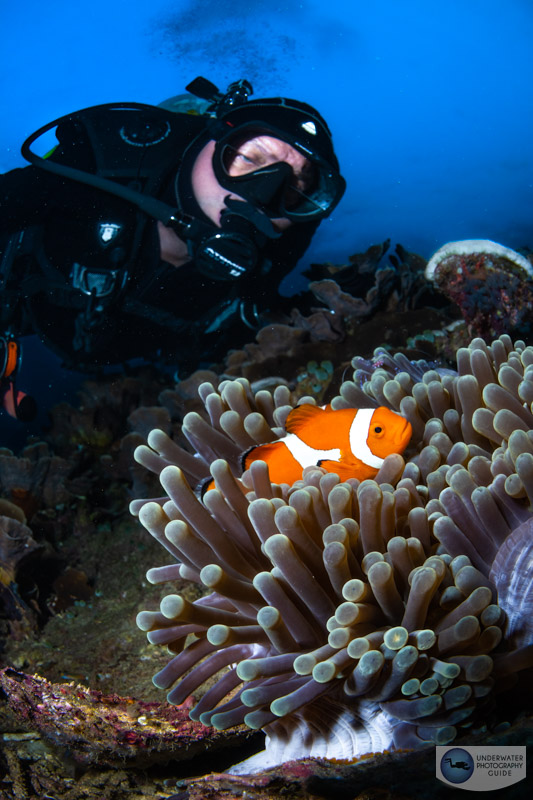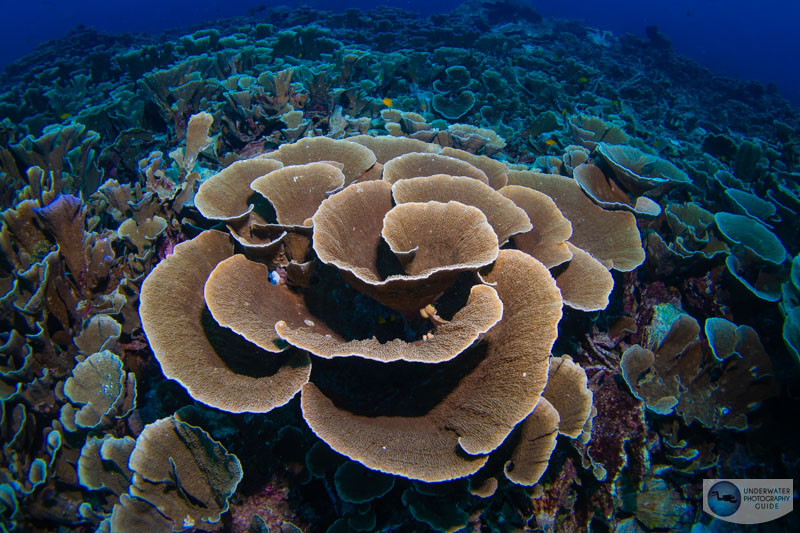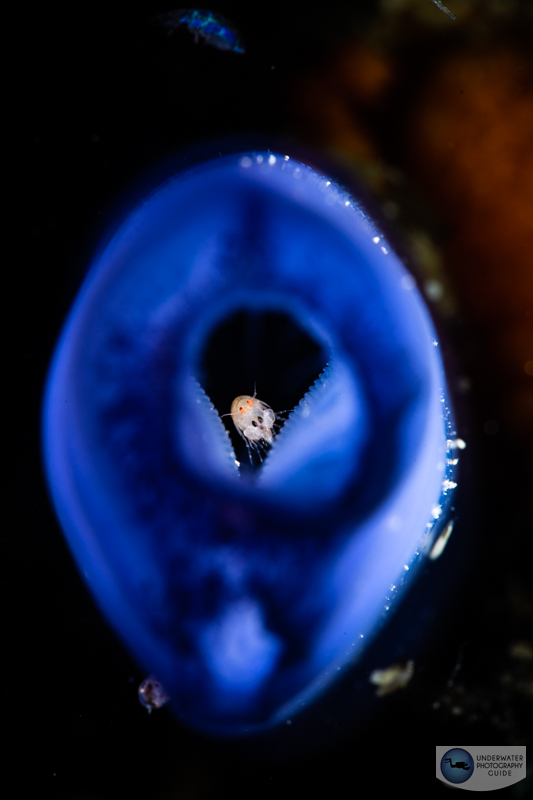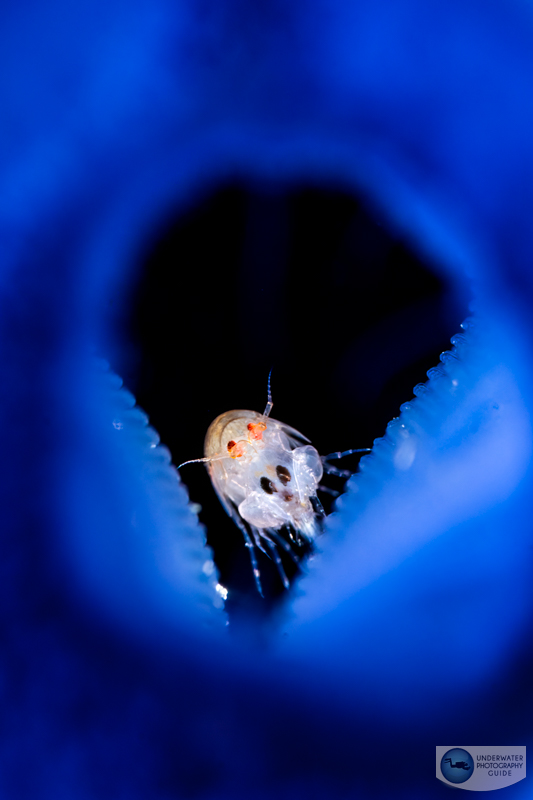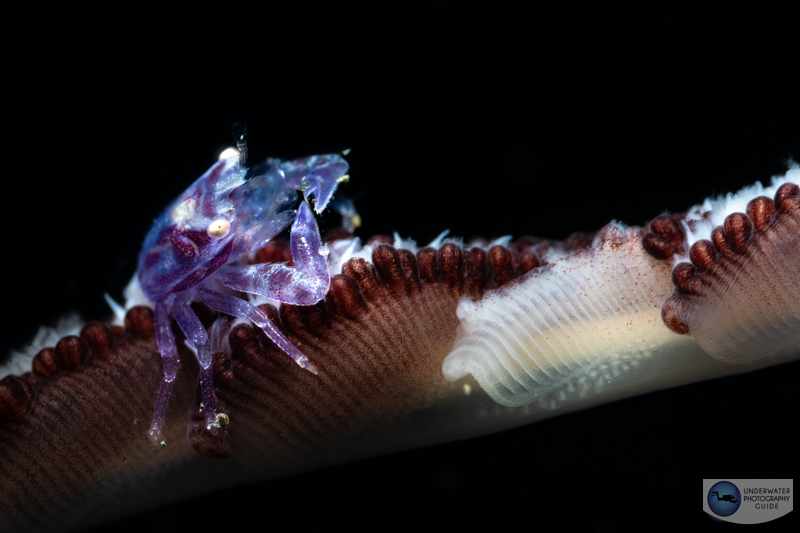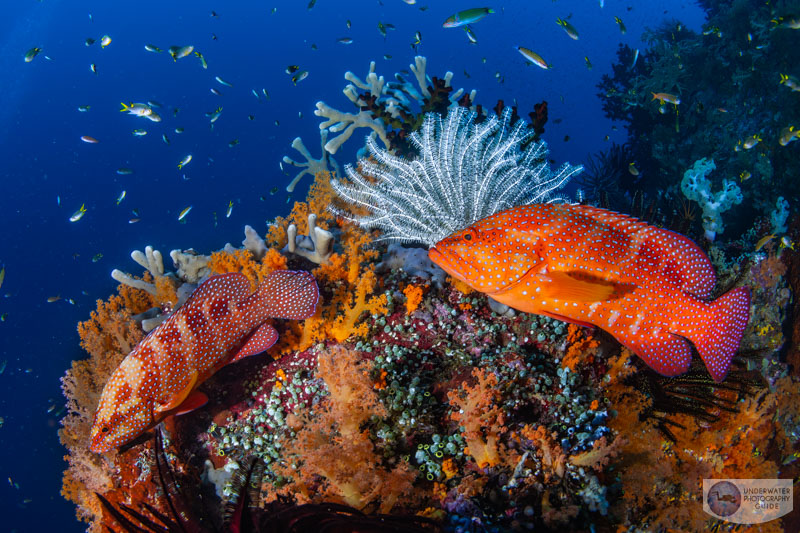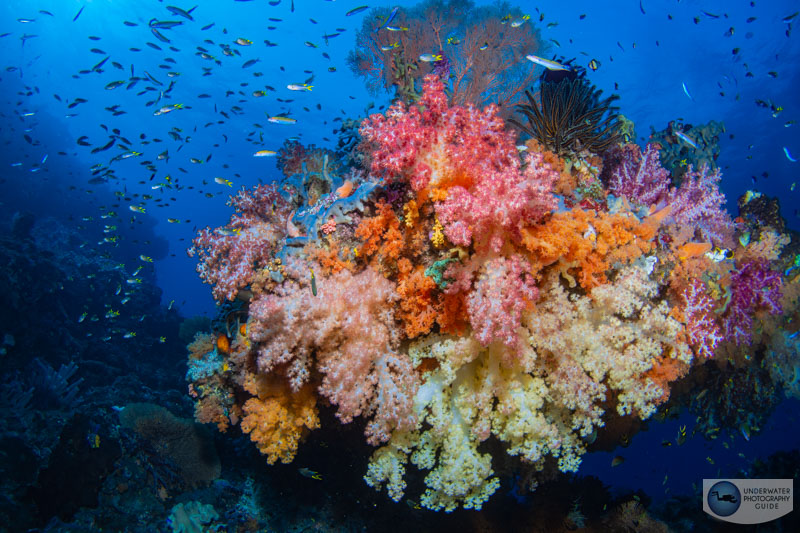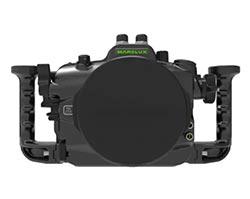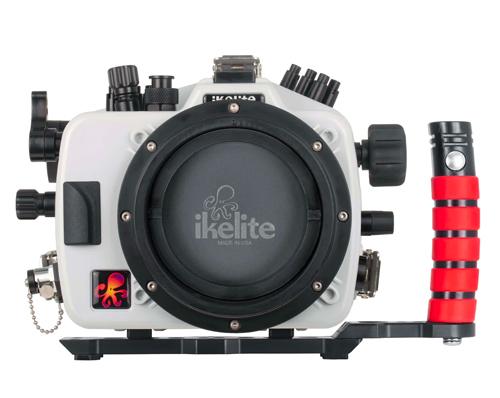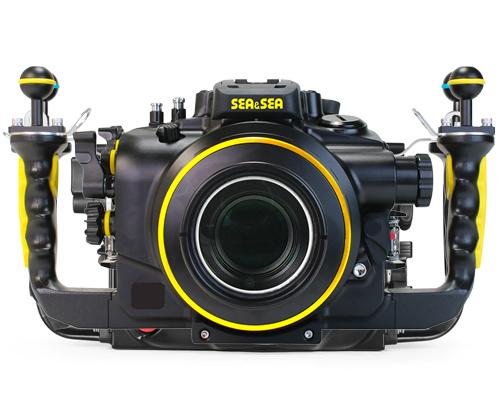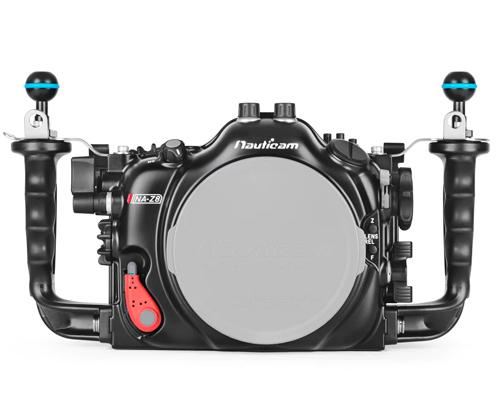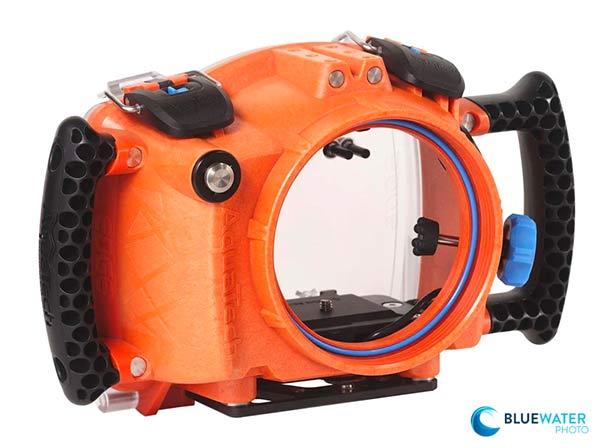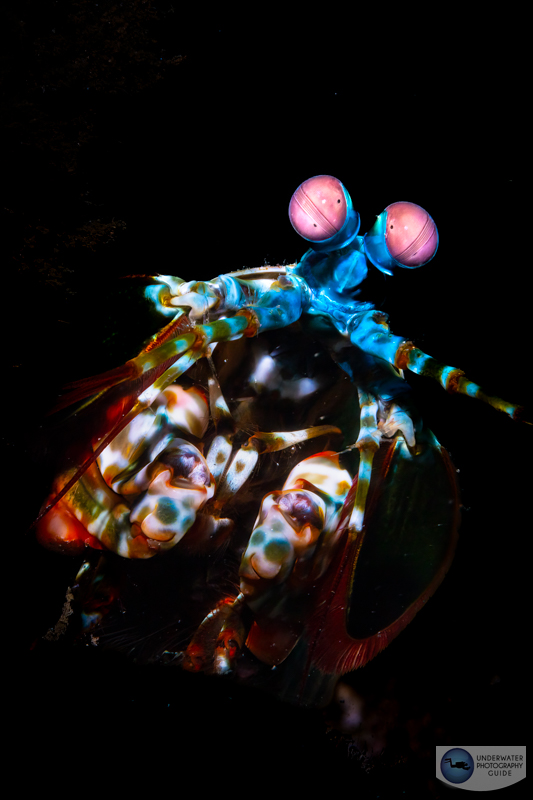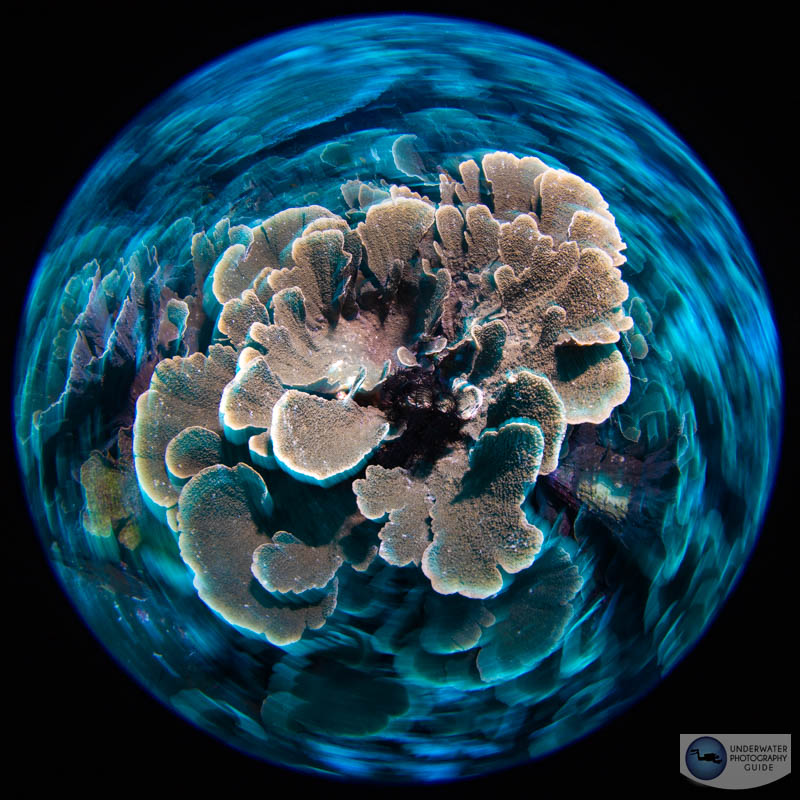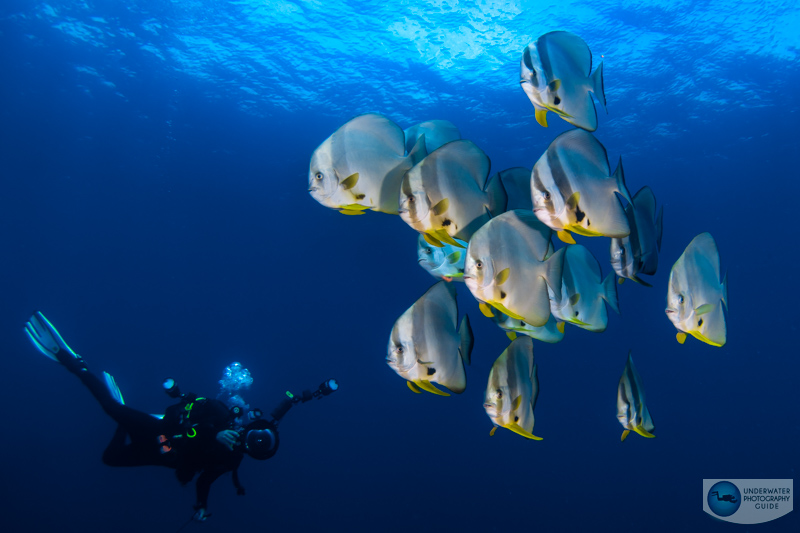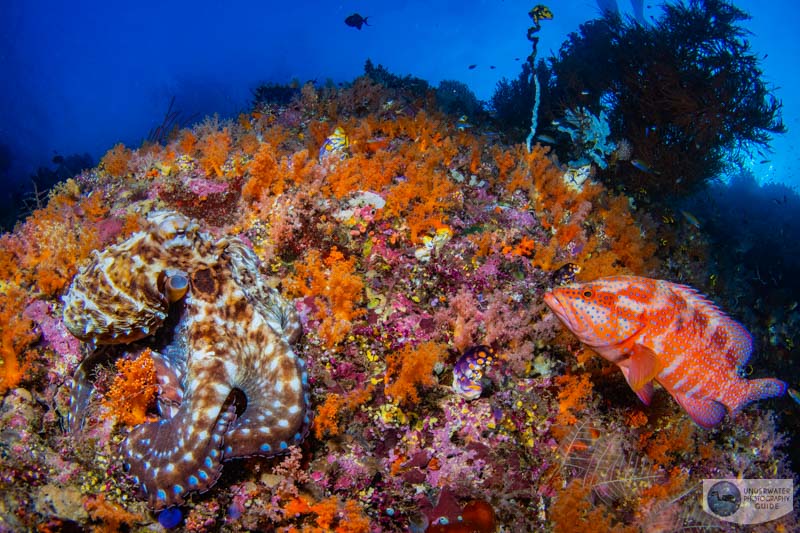
The Sony A7R V might the perfect underwater camera for professional Sony photographers. It follows the Sony A7R IV which revolutionized underwater photography as the highest resolution full-frame camera ever to hit the market. While the A7R V is equipped with the same 61 megapixel sensor, it has been updated with new features like a dedicated AI autofocus processor, new ergonomics, improved in-body image stabilization (IBIS), and much more compelling video features – including 8K/24p & 4k/60p recording. Retailing at $3899 for the body, the A7R V is Sony’s answer to the Canon R5‘s (or Canon’s latest version, the Canon EOS R5 Mark II) excellent price point as the flagship Sony A1 is unaffordable for many.
During our Raja Ampat underwater photography workshop, we had the opportunity to bring this exciting new camera underwater in one of the best dive destinations on the planet. We tested the Sony A7R V on dozens of dives which included fantastic reefs with rainbow soft corals, huge schools of fish, and even a few muck dives. Our lenses of choice for this review were the Sony 90mm macro lens (with the Kraken +13 diopter) and the Canon 8-15mm fisheye lens with the Sigma MC-11 adapter. If you’re ready to see some incredible underwater photos and video and find out how the A7R V performs in the real world – read on!
US MSRP: $3899.99
Jump to a Section
Sony A7R V Specs | Key Features | Sony A7R V for Underwater Photo & Video
Sony A7R V Underwater Housings | Best Underwater Lenses | Who should buy?
Sony A7R V Specifications
- 61 MP full-frame Exmor R BSI CMOS Sensor
- Dual Bionz XR processors
- AI based real-time tracking AF system with a dedicated AI processor
- Lowlight autofocus down to -4 EV
- 1/250 sec shutter sync speed (with strobes)
- 8K/24p and 4K/60p (1.24x crop), 10-bit video recording
- 4K 16-bit RAW video
- S-LOG3, S-Log3 and S-Cinetone picture profiles
- 10 fps burst shooting (compressed RAW)
- 8 stops of 5 axis in-body image stabilization
- 3.2″ 4-axis multi-angle touchscreen
- 9.44 million dot EVF with 120 fps refresh rate
- Dual CFexpress type A/SD card slots
- Size: 131 x 97 x 82 mm
- Weight: 723 grams
Key Sony A7R V Features
The World’s Highest Resolution Image Quality
While the Sony A7R V features the same 61 megapixel sensor as the A7R IV, it does have two new updated Bionz XR processors. 61 megapixels gives users the most resolution of any camera on the full-frame market, but it also adds noise to the image. Overall we found the image quality to be the same between the Sony A7R IV and V. It would have been nice to see some improvements in noise reduction at higher ISOs, but the grain form the noise is quite fine and easy to remove in Lightroom. We find it to be extremely important that your settings are perfect when shooting with such a high resolution sensor to take advantage of the cropping ability of the camera. You need to have high shutterspeeds and small apertures to make sure your details are sharp enough to zoom in. This has been made much easier with an upgraded in-body image stabilization system that allows you to lower your shutter speed more than could have been done on the A7R IV. We were quite happy with the results in low light situations.
Which brings us to our next point – the cropping ability of this camera is out of this world. Just check out this 100% crop we captured of a ladybug amphipod. Given that we were at the limits of what we could shoot with the Sony 90mm and a +13 Kraken KRL-05s diopter – it would not have been possible to capture this photo with another Sony camera.
A New AI Autofocus Processor
Autofocus is the shining feature of the Sony A7R V. That’s not to say the A7R IV didn’t have great autofocus, it did. But the A7R V is Sony’s first camera with a dedicated AI autofocus processor and promises to be Sony’s best ever focusing camera. Now the term “AI” gets thrown around a lot when it comes to new technologies. In the case of the A7R V, Sony has developed subject detection algorithms that can learn from data provided to the camera on movement and form. This makes Sony’s autofocus subject tracking a lot more accurate in real world situations and includes improvements in animal eye autofocus tracking. Moving the autofocus processing to a dedicated processor improves speed as well. And though autofocus from most modern full frame cameras is excellent, underwater photographers can always do with better – especially as we deal with low light, fast moving environments.
After dozens of dives in different quick action situations, we can confidently say that there is a significant difference in the accuracy and speed of autofocus aquisition and tracking on the A7R V over the A7R IV. Fortunately, one of our guests was shooting the A7R IV so we were able to compare the two cameras on site. Now, the A7R IV has a wonderful autofocus system, so if you are happy with what you have, you may not need to upgrade to the A7R V. But for those who want the best autofocus system on the market, the Sony A7R V is it. You can even train your camera by uploading images to it to allow it to hone in its autofocus capbility.
The animal eye autofocus tracking is also significantly better and more accurate. While it’s still not as adavanced as recent Canon cameras like the Canon EOS R6 Mark II, Canon EOS R7, or Canon EOS R10 it’s a significant step above the Sony A1. While the camera had difficulty acquiring fish eyes in wide angle situations, it did not in macro situations.
Improved In-Body Image Stabilization
Sony developed In-Body Image Stabilization, or IBIS, but Canon perfected the feature on the Canon R5, offering 8 stops of image correction. With the Sony A7R V, Sony matches the R5 with 8 stops of stabilization of its own. For those who are confused on what “8 stops of correction” even means, it’s important to picture the sensor in the camera. IBIS allows the sensor in the camera to move and respond to movements in the camera body so that the image sensor stays in one place. It’s sort of like a gyroscope. So if you normally get camera shake in your images at a certain shutter speed, when you turn IBIS on, you will no longer see that camera shake and can, in fact, shoot at shutter speeds 8 stops slower! While we didn’t push the A7R V lower than a shutter speed of 1/40 sec, we likely could have captured crisp photos at lower speeds. More importantly, an improved image stabilization system ensures that photos at higher shutter speeds are very crisp – which is necessary if you want to do any zooming or cropping on your photos.
Underwater video shooters will also be pleased to see that their hand held footage is just as smooth as what was available on the Canon R5. We easily captured hand-held video in strong currents which is the most any video shooter can ask for in a camera.
Improvements to Video Features
The Sony A7R IV and A7R V will never be cameras of choice for underwater video shooters. Both cameras have too many megapixels to produce extremely clean (low noise) video at higher ISOs. However, the Sony A7R V is a major upgrade to the R IV for underwater video, allowing hybrid shooters to easily make use of the camera. The Sony A7R V can capture 8K video up to 24 fps, allowing for significant crops in macro video, and 4K video up to 60 fps, allowing for stable, slowed-down footage. The Sony A7R V also dissipates heat quite well and allows for unlimited record time. Finally, the A7R V allows you to shoot in S-Log and S-Cinetone picture profiles, as well as RAW video to an external recorder. All of these recording options allow for excellent color correction and detail retention in post processing.
Sony A7R V for Underwater Photo & Video
We think the Sony A7R V is an excellent camera for both underwater photo & video, but will be more loved by underwater photographers than videographers. A high resolution camera typically detracts from video quality by adding noise at higher ISOs. However, with unlimited 4K/60p recording and even 8K recording it’s a much better tool for video than the original Sony A7R IV.
The Sony A7R V truly shines with underwater macro photographers who need extra resolution for cropping. Combined with incredibly accurate autofocus, we loved bringing the A7R V on our muck dives in Raja. For wide angle photography, the A7R V is an excellent camera but the added megapixels do require you to get your settings perfect and your photos sharp. An improvement to IBIS certaily helps, we noticed it was easier to capture a wide angle “keeper” with the A7R V than the A7R IV as we could take motion blur from the camera mostly out of the equation. Improved autofocus speeds and IBIS do make the A7R V a solid workhorse for underwater shooters that need to shoot quick action photos and don’t need high burst rates. If you’re shooting with strobes, you likely won’t need higher bursts rates than 6fps (uncompressed RAW) anyway. Overall, we expect the Sony A7R V to be just as popular, if not more than the A7R IV for underwater photography.
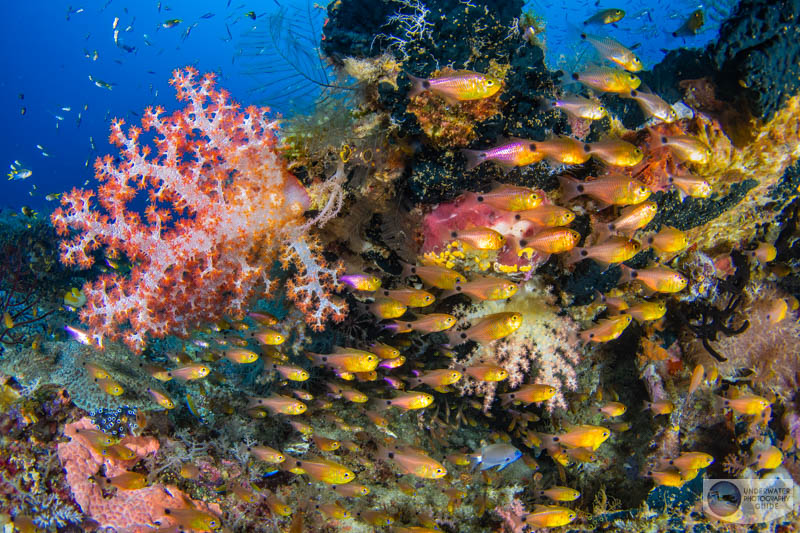
Sony A7R V Underwater Housing Options
The Sony A7R V is thicker than its predecessor to allow for heat dissipation. This means you will not be able to use the A7R V with previous Sony housings, except the Sea & Sea Sony Universal Housing and some Sony A7 IV housings like the Ikelite Sony A7IV housing. Currently there are great underwater housings for the Sony A7R V from Ikelite, Marelux, Sea & Sea, Aquatech, and Nauticam. We anticipate more in the future from Isotta and Aquatica.
Marelux Sony A7R V Underwater Housing
The Marelux Sony A7R V underwater housing is an anodized aluminum housing with excellent ergonomics and novel innovations, especially when it comes to accessories. Marelux offers a series of custom colors and a 125mm port opening that allows easy access to change lenses.
Ikelite Sony A7R V, A7 IV Housing
We had the opportunity to use the Ikelite Sony a7R V housing with our Sony a7R V camera for our review in Raja Ampat. This affordable polycarbonate housing is extremely lightweight underwater and has full control over the camera down to a depth of 200ft! The ergonomics were excellent with a really nice AF-on button and shutter lever system, an easy-to-use vacuum system, and a clear view of the camera. We didn’t run into a single issue with the housing during our dives.
Sea & Sea Sony A7R V Housing
The Sea & Sea housing for the Sony A7R V is an anodized aluminum housing designed for six Sony cameras! Known as a universal housing, it is compatible with the Sony a7R V, Sony A7R IV, Sony A7 IV, Sony A1, Sony A7S III, and Sony A9 II. It comes with a new leak alar unit and a larger rear window so you have a better feeling of what is happening inside the housing.
Nauticam Sony A7R V Housing
The Nauticam Sony A7R V housing is an anodized aluminum housing for the Sony A7R V. It is built around an N120 port system and offers a wide range of lens options, including Nauticam’s water contact optics like the WACP-C, WWL-1, and WACP-1.
Aquatech Sony A7R V Housing (for Snorkel and Surf)
This Aquatech Sony A7R V polycarbonate housing is designed for snorkeling and surf, depth rated to (10m) 33 ft. Aquatech offers a convenient pistol grip to allow easier handling in the water. Stainless steel controls ensure durability.
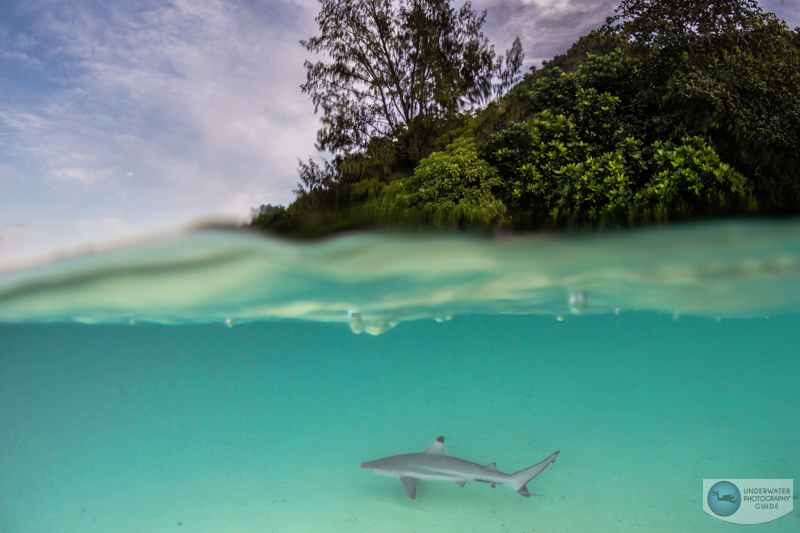
Purchase a Sony A7R V underwater housing at Bluewater Photo:
View All Sony A7R V Underwater Housings
Order a Sony A7R V Camera Body
Order an Ikelite A7R V Housing
Order a Sea & Sea A7R V Housing
Order a Nauticam A7R V Housing
Order an Aquatech Sony A7R V Snorkeling Housing
Read the Best Underwater Settings for the Sony A7R V from Bluewater Photo
Sony A7R V Underwater Lens Options
In recent years, Sony has gone from having a limited supply of lenses for underwater photography to one of the best repertoire of native lenses for full-frame mirrorless cameras on the market. Sony A7R V users have an excellent set of choices for shooting macro, wide, mid-range, and fisheye.
Wide-Angle Lenses
The Sony 16-35mm F/4 lens is the top wide-angle lens choice for photo and video. If you’re looking for something even wider to get nice close-focus wide-angle (CFWA) shots of reefs there are a couple of options for shooting fish-eye. The 28mm prime lens with a fisheye conversion lens will give the widest possible angle of view. The fisheye conversion lens can be used behind a large or small dome port, while the Sony 16-35 mm F/4 les is recommended for use with an 8-inch dome or larger.
Wet wide-angle lenses are a great option with this camera. We recommend the Nauticam wet wide-angle lens or the Kraken KRL-01 wet wide-angle lens with the 28mm prime lens. All of these options are very sharp and will result in stunning wide-angle photos.
Mid-Range Lenses
The Sony 24-70mm F/4 or the Sony 28-70mm F3.5-F5.6 are good choices along with the 35mm F/2.8 portrait lens.
Macro Lenses
For underwater photography, the Sony 90mm macro prime lens is the best choice for small fish and macro subjects. It is exceptionally sharp and produces high quality images. A 50mm macro lens is another great option, though it doesn’t focus as quick as the Sony 90mm. The Sigma 105mm f/2.8 DN DG Art macro lens was reviewed by Bluewater Photo. It looks like it’s going be an excellent alternative to the Sony 90mm with potentially better image quality!
Recommended Topside Sony Lenses
Telephoto
In our opinion, the four best Sony telephoto lenses are the Sony 600mm F/4, Sony 100-400mm F4.5-5.6, Sony 200-600mm F5.6-6.3 and the Sony 70-200mm F2.8. These four lenses are Sony’s flagship telephoto lenses and will each produce stunning image quality. If you’re looking to add to your topside kit bag as well as your underwater one, consider these top-of-the-line options.
Wide-Angle
The Sony 12-24mm F4 FE wide-angle lens is a high-quality zoom lens that’s perfect for landscapes, seascapes, interiors and any other time when getting as much in the frame as possible is the goal.
Canon Lenses
Canon lenses can be attached to the Sony A7R V with the Metabones, Sigma MC-11, or Photodiox adapters, but auto-focus is generally better with Sony lenses. Lenses like the Canon 8-15mm, 16-35mm, 17-40mm, and 100mm can work well.
We did our review with a Canon 8-15mm fisheye lens and a Sigma MC-11 adapter, behind the Ikelite 8 inch compact dome port for close focus wide angle. While the autofocus with the Canon 8-15mm fisheye is slower than a native Sony lens, the Sigma MC-11 does a better job thn the metabones adapter and the autofocus speed and acquisition is acceptable. Autofocus has gotten so good with the A7R V that I thoroughly enjoyed the Canon 8-15mm as a great fisheye option for the camera.
Who Should Buy the Sony A7R V?
If you are a current Sony A7R IV user, there may not be much need to upgrade to the A7R V – unless you value autofocus and image stabilization above all else, or you shoot video. The image quality, however, is roughly the same and both cameras are fairly similar. In fact, if you are invested in the Sony A7 system and looking to upgrade, you may even want to consider the Sony A7R IV which will be cheaper now that the A7R V has been announced.
If you are entering the full frame market for the first time, then the two options you would be considering at this price point are the Canon EOS R5 and the Sony A7R V. Here the choice is a little more difficult. If you are a video shooter, it would be a better idea to consider the Canon EOS R5 with it’s 4K/120p recording and 8K/30p recording. If you are a photographer, then the Sony A7R V is a slightly better choice for macro, with more resolution, and the Canon EOS R5 is a better choice for wide angle, with better lens options and burst rates. Either way, you can’t go wrong with either camera.
Conclusions
While the Sony A7R V is a relatively moderate update to the Sony A7R IV, it brings forth to light exciting new technologies. In a hobby where autofocus is so essential, it’s nice to see the influence AI technology is having on autofocus tracking systems – particularly when it comes to finding fish eyes. After having dived with the camera, we were pleased to confirm that this new autofocus system is different and is better than previous Sony cameras. But more importantly, Sony has introduced a solid, well rounded professional camera at a price point that is much more affordable than their flagship A1. With better video, better stabilization, and improved processing capabilities, it’s going to be a popular option for years to come.




